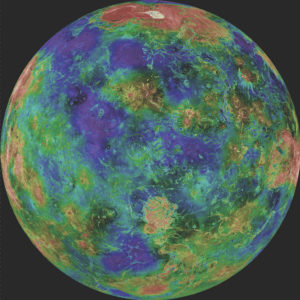When Lauren Harnett was young, she covered all the surfaces of her bedroom with glow-in-the-dark stars. When she got a pickup truck, she painted the night sky on one side of it. Later, at the Rochester Institute of Technology, she studied photographic technology, which she parlayed into a job as a photographer at NASA, where she worked for 10 years.
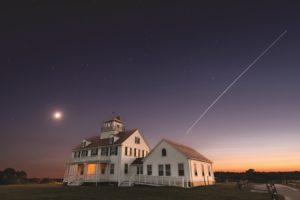
At NASA’s Houston headquarters, Harnett photographed everything from astronaut training sessions to engineering projects to award ceremonies. But at least one assignment allowed her to turn her lens to the sky: photographing the International Space Station as it crossed in front of the moon.
Although Harnett took a different day job five years ago, she still tracks the path of the space station.
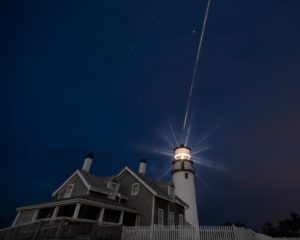
“I go to a dark place and hope for a space station crossing,” says Harnett, who now lives in Lowell. She comes to the Outer Cape often on that quest because of its lack of light pollution. It’s also convenient that her parents, Michael Harnett and Roslyn Diamond, live in Eastham, where she spent summers growing up.
When she’s here, Harnett seeks out clear skies and dark places as well as ways to foreground her photographs of the space station with recognizable Cape Cod scenes. Over the past five years she has created a collection of photographs showing the space station streaking across the night sky above local landmarks like the Nauset Light and Penniman House in Eastham and Highland Light in Truro.
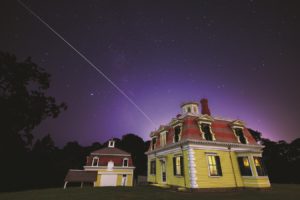
The International Space Station is a large spacecraft that orbits approximately 250 miles above Earth. Begun as a collaborative venture between the U.S. and Russia, it has hosted over 240 astronauts from 19 countries since 2000. (This summer Russia announced it will pull out of the project after 2024). It can host up to six people at a time and is used as a science lab to learn about “living and working in space,” according to NASA.
“Anyone can see it,” says Harnett. It circles the Earth roughly every 93 minutes, completing 15.5 orbits per day. “We see it just after sunset and just before sunrise when the sun is hitting the solar panels,” she says. “It’s different from a plane because it doesn’t have any blinking lights. It’s fast but slower than a comet moving through the sky.”
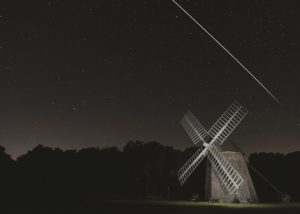
Harnett uses the app ISS Finder to learn when the station will be viewable from specific locations. The app provides the start and end time of a pass, along with a compass showing where to look in the sky and the altitude of its location relative to the horizon. For example, on Friday, Oct. 7, the station will be viewable from Wellfleet for four minutes starting at 7:06 p.m.
Being in the right place at the right time is just one of the challenges of capturing these images. Harnett takes one photograph exposing the foreground, another exposing just the stars, then, positioning her camera on a tripod, she sets her camera in continuous shooting mode with a long shutter speed to take photographs one after another as the space station moves across the screen. At her computer, she uses Photoshop to merge all the photographs into one seamless image.
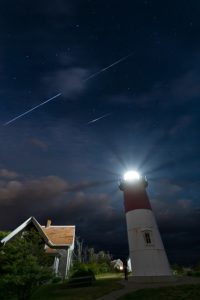
Last week, as Harnett was out photographing the space station, she noticed a huge cloud-like light in the sky — SpaceX launching 52 more Starlink internet satellites into orbit from a rocket in Cape Canaveral, Fla. The resulting stream of flying objects, visible along the East Coast, became a much-photographed phenomenon.
The night sky is becoming a busy place. But that hasn’t changed Harnett’s focus.
“A goal of mine is to shoot the space station over all the lighthouses on the Cape,” she says.
